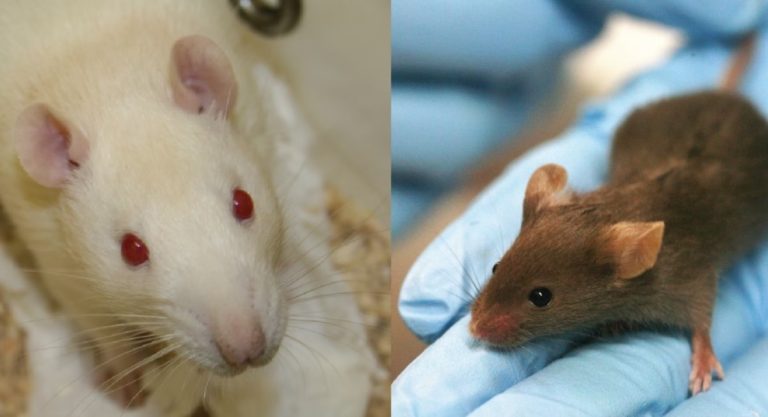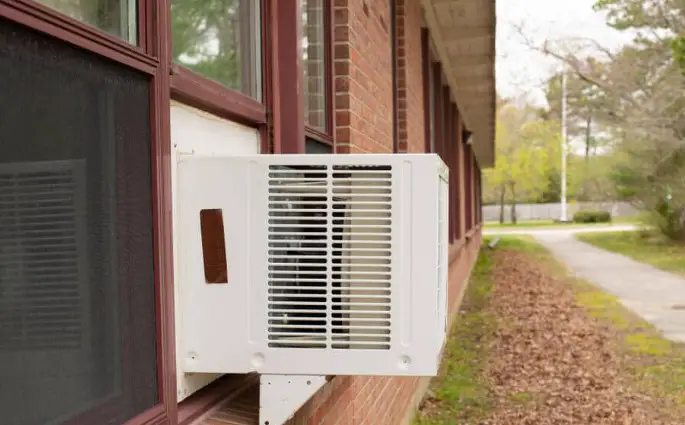Introduction
Mouse nests are common in residential areas and can cause various problems if left unaddressed. This article explores everything you need to know about mouse nests, including their characteristics, locations, removal methods, prevention tips, and the potential damage they can cause. By understanding these topics, you’ll be better equipped to deal with mouse nests and keep them out of your home.
1. What is a Mouse Nest?
A mouse nest is a structure built by mice to provide shelter and protection for themselves and their offspring. These nests are typically found in hidden and secluded areas such as garages, closets, attics, basements, and outbuildings. Mice can also create nests outdoors, often utilizing underground burrows.
1.1 Where do mice nest?
Mice prefer to nest in areas that provide warmth, shelter, and easy access to food sources. Some common locations where mice nest include:
- Garages
- Closets
- Attics
- Basements
- Outbuildings
Additionally, mice may also create nests outdoors in areas such as piles of debris, bushes, and underground burrows.
1.2 What are mouse nests made out of?
Mouse nests are constructed using a variety of materials that can be found in their immediate surroundings. These materials include:
- Shredded fibrous materials
- Chewed paper
- Wires
- Books
- String
- Torn cloth
- Food wrappers
- Insulation
The availability of materials in different environments may vary, but mice are resourceful in creating nests from whatever is accessible to them.
1.3 What does a mouse nest look like?
Mouse nests typically have a distinctive ball-shaped appearance with a hole in the middle. This hole serves as an entry and exit point for the mice, allowing them to come and go as they please. The nest structure provides protection from predators and elements of weather.
1.4 Where do mice like to hide?
In addition to nesting, mice tend to hide in various areas of homes and buildings. Some common hiding spots include:
- Crawl spaces
- Attics
- Ovens
- Ceilings
Mice are adept at finding small and hidden spaces where they feel safe and secure.
1.5 What are mice attracted to in a house?
Mice are attracted to houses primarily because of two reasons:
- Food sources: Mice are scavengers and will search for easily accessible food. Kitchens, pantries, and areas with exposed food are particularly enticing to them.
- Warmth and shelter: Like any other living creature, mice seek warm and cozy environments to survive. Homes provide them with protection from the harsh outdoor elements.
By understanding what attracts mice, you can take proactive steps to prevent infestations and eliminate potential nesting areas.
2. How to Remove a Mouse Nest
If you discover a mouse nest in your home, it’s essential to remove it promptly and safely. Here’s a step-by-step guide to safely removing a mouse nest:
2.1 Tools and materials needed
Before you start removing the mouse nest, gather the following tools and materials:
- Gloves: Protect your hands from potential diseases or parasites.
- Trash bags: Use these to collect the nest and any related debris.
- Vacuum cleaner: Remove any remaining nest materials or debris after the initial cleanup.
2.2 Steps to remove a mouse nest
Follow these steps to remove a mouse nest effectively:
- Put on gloves: Wearing gloves is crucial to protect yourself from any potential health risks associated with mice and their nests.
- Carefully collect nest materials: Use a trash bag to gather the nest materials, being cautious not to disturb or scatter any potential contaminants.
- Dispose of the nest properly: Seal the trash bag containing the nest materials and dispose of it in an outdoor garbage bin or as per local guidelines.
- Vacuum the area: Use a vacuum cleaner to remove any remaining debris or particles from the nesting area. Ensure that you clean the vacuum thoroughly afterward to prevent any contamination.
By following these steps, you can safely and effectively remove a mouse nest from your home.
3. How to Prevent Mice From Nesting in Your Home
Prevention is key when it comes to mice infestations. Here are some effective ways to keep mice from nesting in your home:
3.1 Seal any entry points and gaps in your home
Mice can enter through even the tiniest of openings. Inspect your home for any cracks, gaps, or holes, and seal them properly to prevent mice from gaining access. Focus on areas such as doors, windows, vents, and utility openings.
3.2 Keep food stored in airtight containers
Mice are attracted to easily accessible food sources. Store all food in sealed, airtight containers to reduce their appeal to mice. This includes dry goods, pet food, and pantry items.
3.3 Remove any potential nesting materials or clutter
Mice can utilize various materials they find in your home for nest-building purposes. Keep your living spaces clutter-free and regularly clean areas such as attics, basements, and closets to minimize potential nesting materials.
3.4 Keep your home clean and tidy
A clean and well-maintained home is less appealing to mice. Regularly vacuum, sweep, and mop floors, and promptly clean up any spills or food crumbs. Additionally, ensure that garbage and recycling bins are tightly sealed to prevent mice from accessing them.
By implementing these prevention measures, you can significantly reduce the risk of mice nesting in your home.
4. Recognizing Signs of a Mouse Infestation
Knowing the signs of a mouse infestation can help you detect and address the issue early on. Look out for the following indicators:
4.1 How to tell if you have mice in your home
Some common signs that indicate the presence of mice in your home include:
- Mouse droppings: Small, oval-shaped droppings that resemble grains of rice.
- Gnaw marks: Check for gnaw marks on food products, furniture, or other household items.
- Mouse tracks: Look for footprints or tail marks in dusty or dirty areas.
- Strong odor: Mice can emit a distinct, musky odor that becomes more noticeable in enclosed spaces.
If you notice any of these signs, it’s essential to take immediate action to remove the mice and prevent further infestation.
5. Damages Caused by Mice
5.1 Dangers to health and property
Mice can pose risks to both your health and property. They can carry diseases, contaminate food, and damage structures and belongings with their constant chewing and nesting habits. It’s crucial to address mouse infestations promptly to protect your well-being and property.
5.2 Chewed wires and insulation
Mice have a natural instinct to chew on objects to keep their teeth from growing too long. This habit can lead to chewed wires, which pose a fire hazard, and damaged insulation, which compromises the energy efficiency of your home.
5.3 Contamination of food supplies
Mouse infestations can contaminate your food supplies with droppings, urine, and hair. Consuming contaminated food can lead to health complications. It’s crucial to discard any food that may have come into contact with mice.
6. Mouse Nest Removal Experts
6.1 Why hire professionals for mouse nest removal?
While it’s possible to remove a mouse nest on your own, hiring professionals for mouse nest removal offers several advantages. Mouse control experts have the knowledge, experience, and resources to handle infestations safely and effectively, ensuring complete removal and prevention of re-infestation.
6.2 Benefits of professional mouse control services
Professional mouse control services provide the following benefits:
- Thorough inspection: Professional technicians can identify the extent of the infestation and locate hidden nesting areas.
- Effective treatment plans: Experts develop customized treatment plans based on the specific infestation, ensuring maximum effectiveness.
- Safe removal: Professionals use safe and humane methods to remove mice and nests without causing harm to humans or pets.
- Preventive measures: Mouse control experts can recommend and implement preventive measures to keep mice from returning.
By hiring professionals, you can save time, ensure a complete removal, and have peace of mind knowing that the infestation is handled effectively.
7. Most Common Places to Find a Mouse Nest in the House
Mice tend to seek out hidden and secluded areas to build their nests. Here are some common places where you may find mouse nests in your house:
7.1 Attics and crawl spaces
Attics and crawl spaces provide the ideal environment for mice to build their nests. These areas offer insulation, undisturbed corners, and easy access to other parts of the house.
7.2 Garages and basements
Garages and basements often contain clutter, providing ample hiding spots for mice. Additionally, these areas may have entry points such as gaps in doors or windows, making them attractive to mice.
7.3 Kitchen and pantry areas
Mice are drawn to kitchens and pantry areas due to the availability of food sources. These areas should be kept clean and free from accessible food to prevent mice from nesting.
7.4 Behind appliances
Behind appliances, such as stoves and refrigerators, offer hidden spaces that provide both warmth and cover for mice to create nests.
8. Understanding Mouse Behavior
8.1 Nesting habits and breeding patterns
Mice are prolific breeders and can reproduce rapidly. They typically build nests before giving birth to their offspring. Understanding their breeding patterns and nesting habits can help in implementing effective control measures.
8.2 Typical hiding spots and preferred habitats
In addition to nests, mice prefer hiding in areas where they can stay hidden and undisturbed. These include crawl spaces, attics, ovens, and ceilings. By knowing their favored hiding spots, you can target these areas for prevention and control measures.
9. Mouse Nest in Home: Prevention & Control Tips
9.1 How to keep mice out of your home
To prevent mice from nesting in your home, consider the following tips:
-
- Seal entry points and gaps
- Store food in airtight containers
<li







